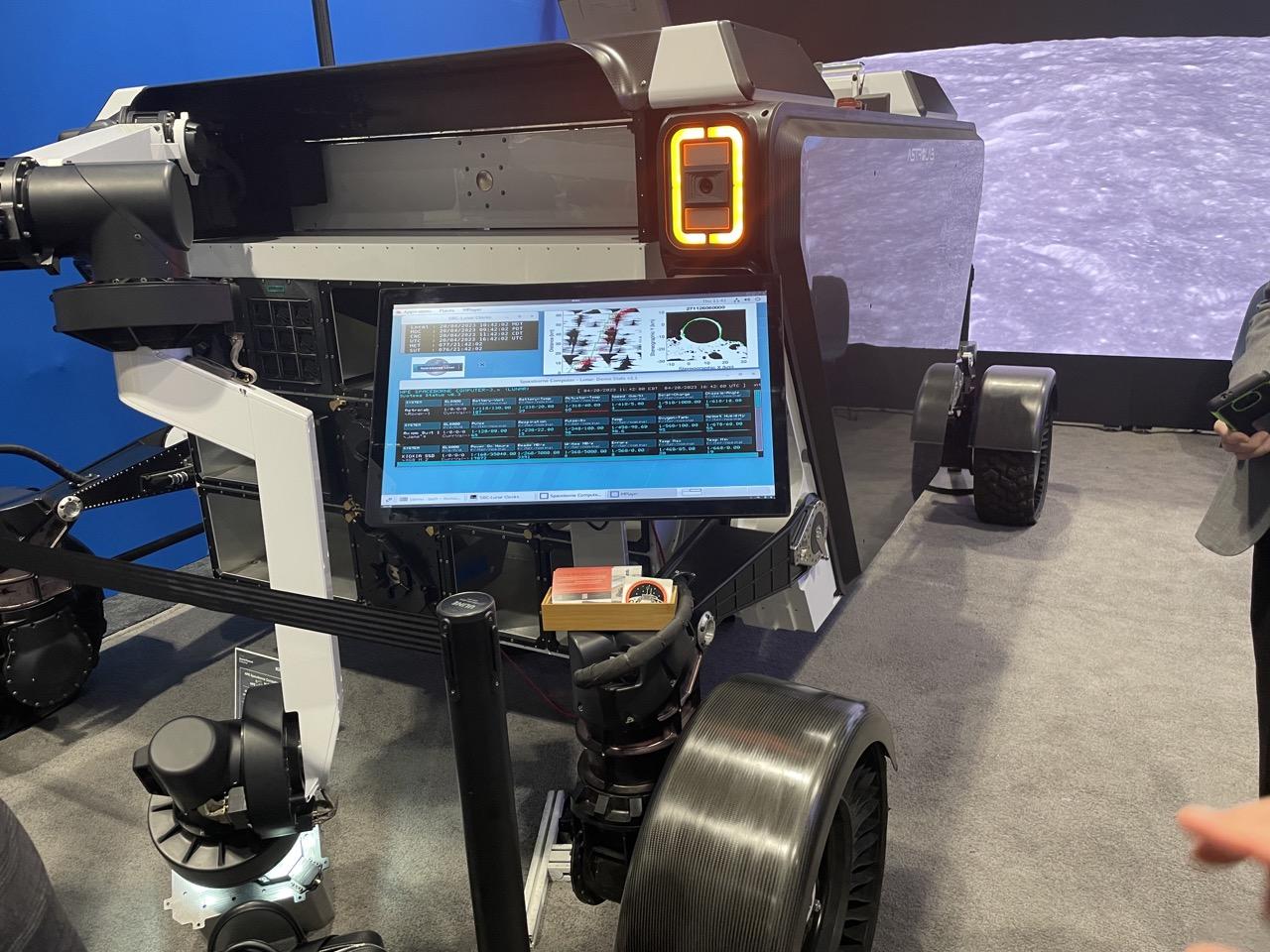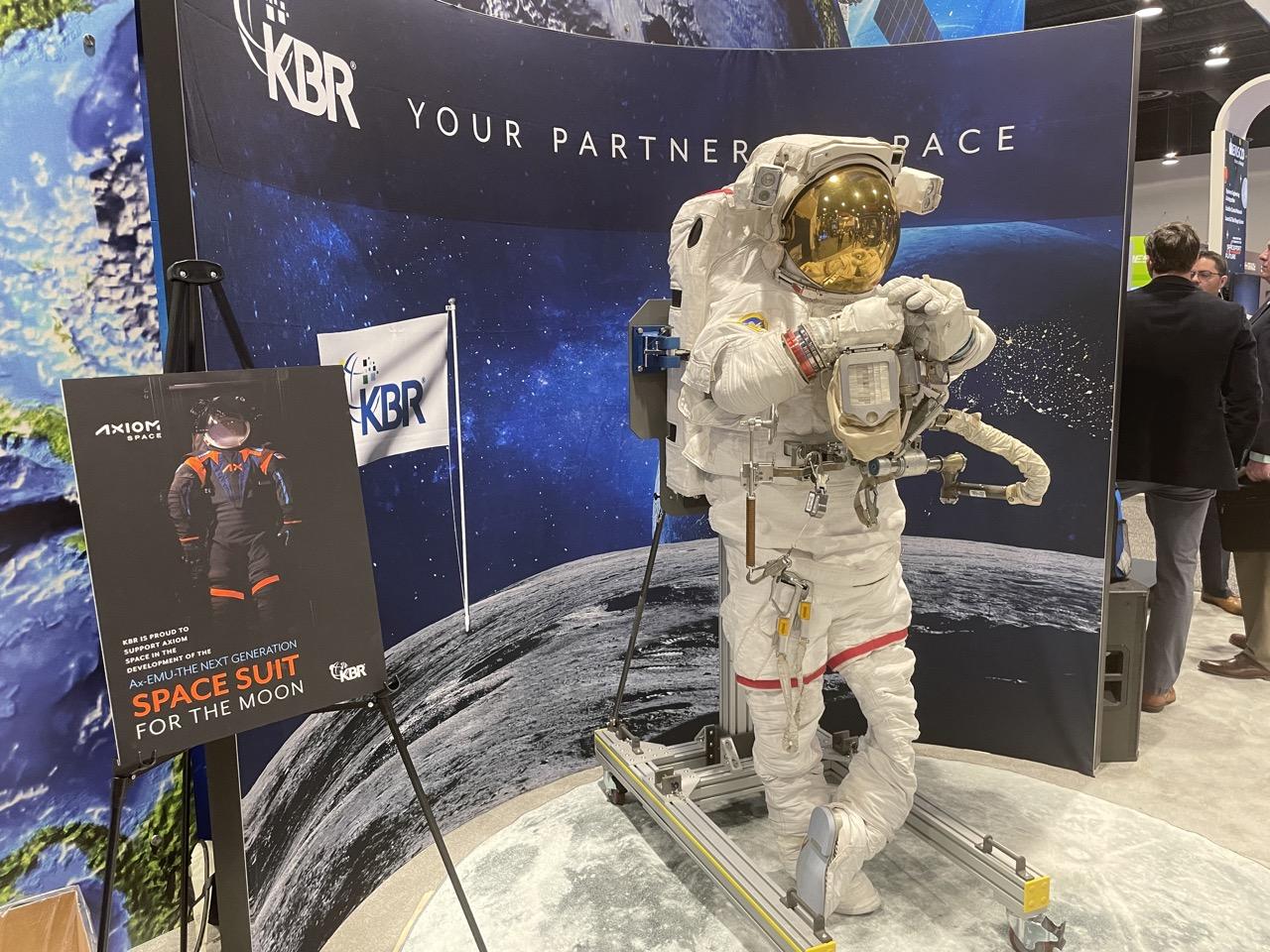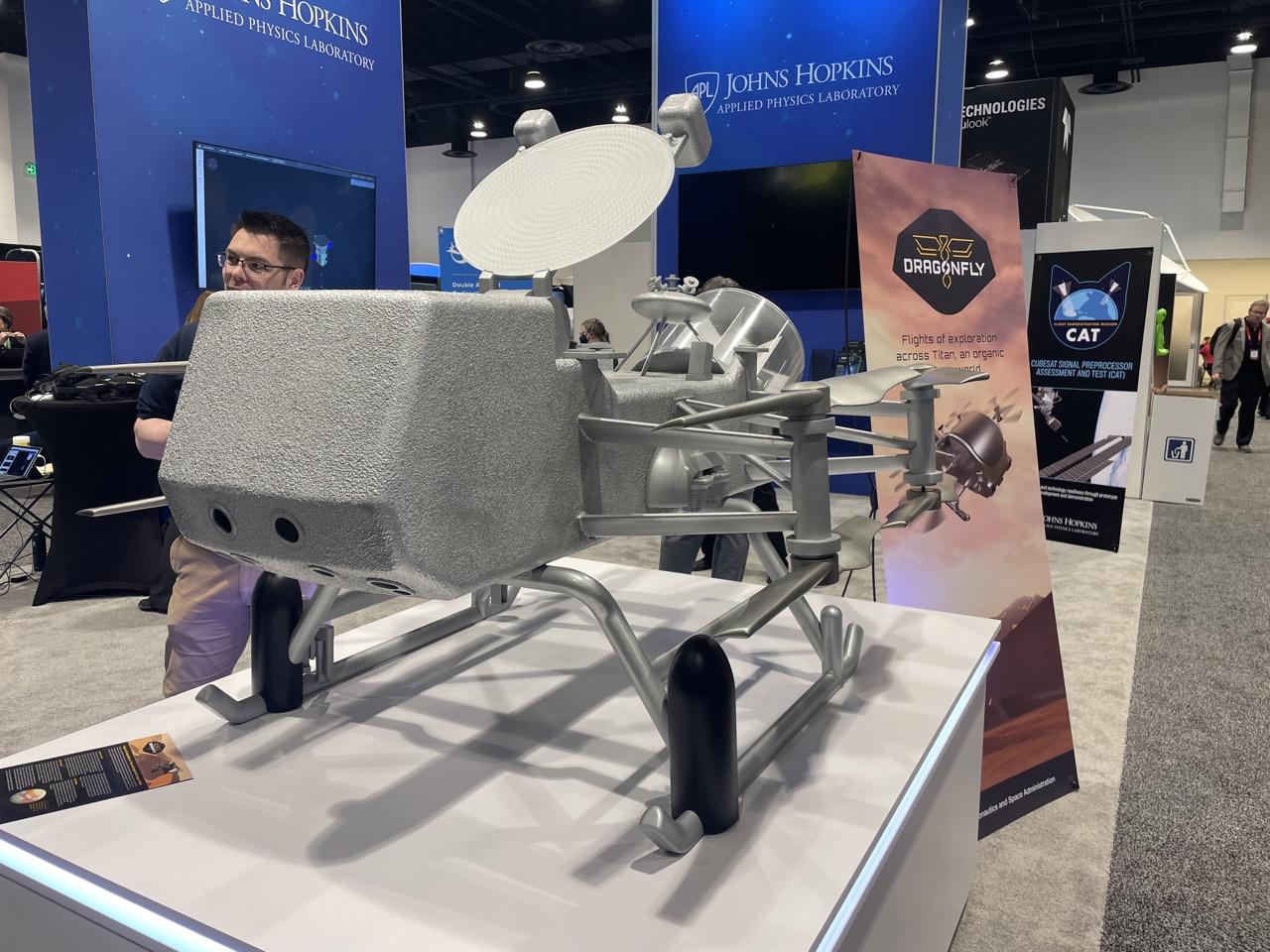Gallery: Cutting-edge Technology On Show At Space Symposium 2023
April 20, 2023
Scientists and engineers at Rolls-Royce are working on the Micro-Reactor program to develop technology that will provide power needed for humans to live and work on the Moon. The company recently signed a contract with the UK Space Agency to study future nuclear power options for space exploration and is starting work on a power conversion testbed in Bristol, England, to evaluate key elements of the technology.

Northrop Grumman and Firefly Aerospace displayed at Space Symposium for the first time a model of the Antares 330, a new medium launch vehicle in development to replace the current Antares rocket, which is built in Ukraine and powered by Russian engines.

Leidos has partnered with NASCAR to produce a new lunar rover, which supports male and female crew members across varying height and weight scales, promoting inclusivity in space exploration. Leidos CEO Roger Krone said: “This groundbreaking collaboration between Leidos and NASCAR takes both companies into uncharted territory, just like we believe our rover will do for NASA and its astronauts. We aim to pave the way for human exploration of space and inspire the next generation of engineers, scientists and innovators to reach for the stars.”

Astrolab displayed its Flexible Logistics and Exploration (FLEX) rover for the first time at Space Symposium. Built to enhance lunar and planetary mobility the FLEX is configured around an inverted U-shape chassis resembling a mobile cargo container crane. The vehicle frame provides three cubic meters of volume and can hold up to 1,500 kgs. The astronauts are positioned at the rear of the vehicle in a standing position, designed for greater comfort in a low-gravity environment.

The moon experiences temperatures ranging from -274 F to 250 F (-170 C to 120 C) and is bombarded by high-energy cosmic ray radiation. Rubber materials, such as those used in standard tires, will be unable to withstand sustained use and will be damaged quickly in this extreme environment. For this reason, Bridgestone chose to make all-metal tires to perform in these harsh conditions.

Collins Aerospace displayed its next-generation spacesuit at the symposium following its selection by NASA in December to develop the new suit for the International Space Station (ISS). The suits will replace the existing, decades-old Extravehicular Mobility Unit suits used for spacewalks outside the ISS. Demonstrations of the suit on an ISS spacewalk with NASA astronauts are due to begin no later than April 2026.

KBR and Axiom Space are collaborating on a new $3.5 billion spacesuit for NASA to be used on the first Artemis landing mission. The design was awarded a NASA development contract in 2022 for the Artemis 3 mission, including the design, development and production of the spacesuits that astronauts will wear on NASA’s first crewed landing on the moon in more than 50 years.

NASA's Dragonfly will fly around Titan, one Saturn's moons, to look for signs of life. Dragonfly will launch in 2026 and arrive in 2034. The rotorcraft will fly to dozens of promising locations on Titan looking for prebiotic chemical processes common on both Titan and Earth. Dragonfly marks the first time NASA will fly a multi-rotor vehicle for science on another planet; it has eight rotors and flies like a large drone. It will take advantage of Titan’s dense atmosphere – four times denser than Earth’s – to become the first vehicle ever to fly its entire science payload to new places for repeatable and targeted access to surface materials.

United Launch Alliance displayed its new Hypersonic Inflatable Aerodynamic Decelerator (HIAD) technology, which is in development to recover the engines of the Vulcan Centaur launch vehicle.

United Launch Alliance's inflatable HIAD aeroshell will deploy to protect the engine section on re-entry before cradling the propulsion system for a decent under parachute. The BE-4 will then be captured by a helicopter as they descend to Earth.

German Aerospace Center (DLR) tested the AstroRad radiation protection vest on Artemis I, the first flight test of the Space Launch System rocket and Orion spacecraft. The investigation, called the Matroshka AstroRad Radiation Experiment provided valuable data on radiation levels during missions to the Moon while testing the effectiveness of the new vest. The AstroRad uses a proprietary smart shielding design to selectively protect those organs and tissues which are most sensitive to radiation in terms of REID probability. This approach provides the greatest biological impact of protection with the least amount of mass. Tissue weighting factors are assigned to organs and tissues in the body to reflect the variance in radiation sensitivity, with organs such as the lungs, bone marrow, colon, stomach, breasts and ovaries being among the most sensitive.

Scientists and engineers at Rolls-Royce are working on the Micro-Reactor program to develop technology that will provide power needed for humans to live and work on the Moon. The company recently signed a contract with the UK Space Agency to study future nuclear power options for space exploration and is starting work on a power conversion testbed in Bristol, England, to evaluate key elements of the technology.

Northrop Grumman and Firefly Aerospace displayed at Space Symposium for the first time a model of the Antares 330, a new medium launch vehicle in development to replace the current Antares rocket, which is built in Ukraine and powered by Russian engines.

Leidos has partnered with NASCAR to produce a new lunar rover, which supports male and female crew members across varying height and weight scales, promoting inclusivity in space exploration. Leidos CEO Roger Krone said: “This groundbreaking collaboration between Leidos and NASCAR takes both companies into uncharted territory, just like we believe our rover will do for NASA and its astronauts. We aim to pave the way for human exploration of space and inspire the next generation of engineers, scientists and innovators to reach for the stars.”

Astrolab displayed its Flexible Logistics and Exploration (FLEX) rover for the first time at Space Symposium. Built to enhance lunar and planetary mobility the FLEX is configured around an inverted U-shape chassis resembling a mobile cargo container crane. The vehicle frame provides three cubic meters of volume and can hold up to 1,500 kgs. The astronauts are positioned at the rear of the vehicle in a standing position, designed for greater comfort in a low-gravity environment.

The moon experiences temperatures ranging from -274 F to 250 F (-170 C to 120 C) and is bombarded by high-energy cosmic ray radiation. Rubber materials, such as those used in standard tires, will be unable to withstand sustained use and will be damaged quickly in this extreme environment. For this reason, Bridgestone chose to make all-metal tires to perform in these harsh conditions.

Collins Aerospace displayed its next-generation spacesuit at the symposium following its selection by NASA in December to develop the new suit for the International Space Station (ISS). The suits will replace the existing, decades-old Extravehicular Mobility Unit suits used for spacewalks outside the ISS. Demonstrations of the suit on an ISS spacewalk with NASA astronauts are due to begin no later than April 2026.

KBR and Axiom Space are collaborating on a new $3.5 billion spacesuit for NASA to be used on the first Artemis landing mission. The design was awarded a NASA development contract in 2022 for the Artemis 3 mission, including the design, development and production of the spacesuits that astronauts will wear on NASA’s first crewed landing on the moon in more than 50 years.

NASA's Dragonfly will fly around Titan, one Saturn's moons, to look for signs of life. Dragonfly will launch in 2026 and arrive in 2034. The rotorcraft will fly to dozens of promising locations on Titan looking for prebiotic chemical processes common on both Titan and Earth. Dragonfly marks the first time NASA will fly a multi-rotor vehicle for science on another planet; it has eight rotors and flies like a large drone. It will take advantage of Titan’s dense atmosphere – four times denser than Earth’s – to become the first vehicle ever to fly its entire science payload to new places for repeatable and targeted access to surface materials.

United Launch Alliance displayed its new Hypersonic Inflatable Aerodynamic Decelerator (HIAD) technology, which is in development to recover the engines of the Vulcan Centaur launch vehicle.

United Launch Alliance's inflatable HIAD aeroshell will deploy to protect the engine section on re-entry before cradling the propulsion system for a decent under parachute. The BE-4 will then be captured by a helicopter as they descend to Earth.

German Aerospace Center (DLR) tested the AstroRad radiation protection vest on Artemis I, the first flight test of the Space Launch System rocket and Orion spacecraft. The investigation, called the Matroshka AstroRad Radiation Experiment provided valuable data on radiation levels during missions to the Moon while testing the effectiveness of the new vest. The AstroRad uses a proprietary smart shielding design to selectively protect those organs and tissues which are most sensitive to radiation in terms of REID probability. This approach provides the greatest biological impact of protection with the least amount of mass. Tissue weighting factors are assigned to organs and tissues in the body to reflect the variance in radiation sensitivity, with organs such as the lungs, bone marrow, colon, stomach, breasts and ovaries being among the most sensitive.

Scientists and engineers at Rolls-Royce are working on the Micro-Reactor program to develop technology that will provide power needed for humans to live and work on the Moon. The company recently signed a contract with the UK Space Agency to study future nuclear power options for space exploration and is starting work on a power conversion testbed in Bristol, England, to evaluate key elements of the technology.
Over 10,000 people from every sector of the global space ecosystem connect at Space Symposium each year. Commercial, government, defense, science, technology and education leaders come together to solve challenges and chart the future.










